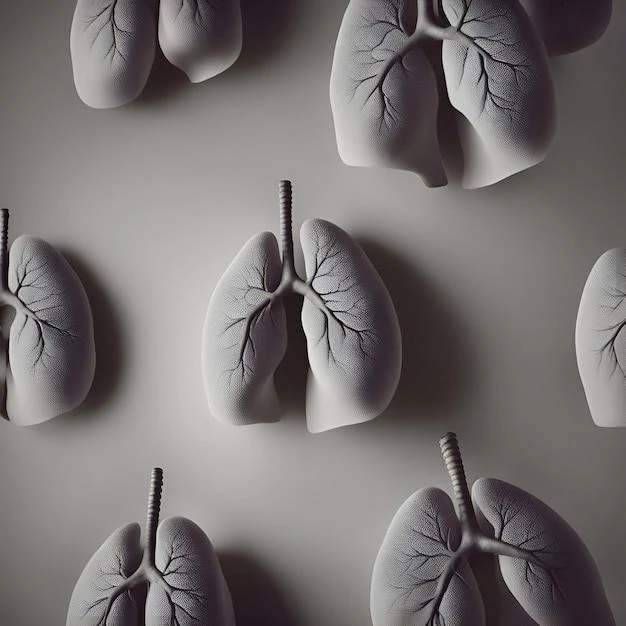Understanding Hepatic Fibrosis
When delving into the complexities of Hepatic Fibrosis, it is crucial to comprehend its various aspects. From understanding the causes to recognizing its progression to cirrhosis, this article aims to provide a comprehensive overview of this liver condition.
Introduction to Hepatic Fibrosis
Hepatic Fibrosis is a condition characterized by the scarring of the liver tissue. It is a dynamic process that occurs in response to liver injury, such as chronic inflammation. The liver, being a vital organ responsible for various functions like metabolism and detoxification, is particularly susceptible to damage.
Understanding Hepatic Fibrosis is essential as it can progress to more severe conditions like cirrhosis if left untreated. This progression can lead to impaired liver function and even result in life-threatening complications. Hence, early detection and management are crucial to prevent significant liver damage.
Several factors can contribute to the development of Hepatic Fibrosis, including chronic viral hepatitis, excessive alcohol consumption, non-alcoholic fatty liver disease, autoimmune disorders, and biliary diseases. It is important to address these underlying causes to effectively manage the condition and prevent further damage to the liver.
Diagnostic methods such as imaging studies, blood tests, and liver biopsy play a vital role in assessing the extent of liver damage and monitoring the progression of Hepatic Fibrosis. Regular monitoring is essential to track any changes in the liver and determine the effectiveness of treatment interventions.
By gaining a deeper understanding of Hepatic Fibrosis, individuals can take proactive steps towards maintaining liver health and preventing the progression of this condition. Through lifestyle modifications, appropriate medical treatment, and regular follow-ups with healthcare providers, individuals can better manage Hepatic Fibrosis and its associated complications.
Causes of Hepatic Fibrosis
Hepatic Fibrosis can arise from various underlying causes, each contributing to the development and progression of liver scarring. Understanding these causes is essential for proper management and prevention strategies⁚
- Chronic Viral Hepatitis⁚ Viral infections such as hepatitis B and C can lead to chronic inflammation in the liver, triggering fibrogenesis, the process of excess collagen production and scar formation.
- Excessive Alcohol Consumption⁚ Prolonged and excessive alcohol use can damage liver cells and promote inflammation, leading to the accumulation of scar tissue over time.
- Non-Alcoholic Fatty Liver Disease (NAFLD)⁚ NAFLD, often associated with obesity and metabolic syndrome, can progress to Non-Alcoholic Steatohepatitis (NASH), causing liver inflammation and fibrosis.
- Autoimmune Disorders⁚ Conditions like autoimmune hepatitis and primary biliary cholangitis involve the immune system mistakenly attacking liver cells, resulting in inflammation and fibrotic changes.
- Biliary Diseases⁚ Disorders affecting the bile ducts, such as primary sclerosing cholangitis, can obstruct bile flow, leading to liver injury, inflammation, and fibrosis.
It is crucial to address the underlying cause of Hepatic Fibrosis to effectively manage the condition and prevent its progression to more severe liver diseases like cirrhosis. Healthcare providers will tailor treatment strategies based on the specific cause of liver damage, emphasizing the importance of early intervention and lifestyle modifications to support liver health.
Pathogenesis of Hepatic Fibrosis
The pathogenesis of Hepatic Fibrosis involves a complex interplay of cellular processes that result in the accumulation of scar tissue in the liver. Understanding the key mechanisms underlying this condition can aid in developing targeted treatment approaches and interventions⁚
- Inflammation⁚ Liver injury triggers an inflammatory response, recruiting immune cells to the site of damage. Chronic inflammation can lead to sustained activation of pro-inflammatory pathways, promoting fibrogenesis.
- Fibrogenesis⁚ Hepatic stellate cells, normally quiescent in the liver, become activated in response to injury. These cells transition to myofibroblasts, producing excess collagen and extracellular matrix proteins, leading to fibrotic scarring.
- Excessive Extracellular Matrix Production⁚ Dysregulation of matrix metalloproteinases (MMPs) and tissue inhibitors of metalloproteinases (TIMPs) disrupts the balance between matrix synthesis and degradation, contributing to fibrosis progression.
- Activation of Fibrogenic Signaling Pathways⁚ Various signaling pathways, including TGF-beta, PDGF, and Wnt/beta-catenin, play crucial roles in stimulating fibrogenesis and promoting the activation of hepatic stellate cells.
- Portal Hypertension⁚ Advanced fibrosis can lead to increased resistance to blood flow in the liver, resulting in elevated portal pressure. Portal hypertension can lead to severe complications such as variceal bleeding and hepatic encephalopathy.
- Risk of Hepatocellular Carcinoma⁚ Patients with advanced liver fibrosis are at an increased risk of developing hepatocellular carcinoma (HCC), highlighting the importance of early detection and intervention to prevent cancer development.
By understanding the intricate pathogenesis of Hepatic Fibrosis, healthcare providers can tailor treatment strategies to target specific pathways involved in fibrosis progression. Early intervention and regular monitoring are essential to mitigate the impact of fibrosis on liver function and overall health.

Progression to Cirrhosis
Hepatic Fibrosis, if left untreated or inadequately managed, can progress to a more advanced stage known as Cirrhosis. Understanding the progression to Cirrhosis is crucial for patients and healthcare providers to implement timely interventions and prevent further liver damage⁚
- Continued Scar Formation⁚ In Cirrhosis, ongoing liver injury and fibrogenesis result in the accumulation of extensive scar tissue throughout the liver, disrupting its normal structure and function.
- Impaired Liver Function⁚ As Cirrhosis advances, the liver’s ability to perform essential functions such as metabolism, detoxification, and protein synthesis is compromised, leading to various complications.
- Development of Nodules⁚ In advanced Cirrhosis, regenerative nodules form within the liver parenchyma, contributing to the characteristic nodular appearance associated with this stage of liver disease.
- Portal Hypertension⁚ Cirrhosis often leads to increased pressure within the portal vein system, known as portal hypertension. This can result in serious complications such as varices, ascites, and hepatic encephalopathy.
- Risk of Hepatocellular Carcinoma⁚ Patients with Cirrhosis have a significantly higher risk of developing hepatocellular carcinoma (HCC), a type of liver cancer. Regular screening is essential for early detection and treatment of HCC in this population.
- End-Stage Liver Disease⁚ Cirrhosis represents the final stage of chronic liver damage, where the liver’s capacity for regeneration and function is severely compromised. Without intervention, Cirrhosis can lead to liver failure and the need for liver transplantation.
Given the serious implications of Cirrhosis, individuals diagnosed with Hepatic Fibrosis must work closely with their healthcare team to monitor disease progression, adhere to recommended treatment regimens, and make lifestyle modifications to support liver health. Early intervention and proactive management are key in preventing the progression to Cirrhosis and its associated complications.
Diagnosis and Monitoring of Hepatic Fibrosis
Accurate diagnosis and regular monitoring of Hepatic Fibrosis are essential components of effective disease management. Healthcare providers utilize various diagnostic tools and monitoring techniques to assess liver health, track disease progression, and determine the appropriate course of treatment⁚
- Imaging Studies⁚ Imaging techniques such as ultrasound, computed tomography (CT), and magnetic resonance imaging (MRI) can provide valuable insights into liver structure, detecting signs of fibrosis and cirrhosis.
- Blood Tests⁚ Liver function tests, including serum markers like ALT, AST, ALP, and bilirubin, help evaluate liver function and detect abnormalities associated with liver damage and fibrosis.
- Transient Elastography⁚ This non-invasive technique measures liver stiffness, providing an indirect assessment of liver fibrosis severity. Transient elastography is a valuable tool for monitoring changes in fibrosis over time.
- Liver Biopsy⁚ Although invasive, liver biopsy remains the gold standard for assessing the degree of fibrosis and inflammation in the liver. It provides detailed information about the liver tissue structure and aids in determining the stage of liver disease.
- Fibrosis Scores⁚ Fibrosis scoring systems like the Fibrosis-4 (FIB-4) index and the Enhanced Liver Fibrosis (ELF) test use specific biomarkers to predict the degree of liver fibrosis and aid in disease monitoring.
Regular monitoring of Hepatic Fibrosis is crucial to evaluate treatment effectiveness, detect disease progression, and identify potential complications like portal hypertension and hepatocellular carcinoma. Patients with Hepatic Fibrosis should work closely with their healthcare team to undergo recommended tests and screenings at appropriate intervals to ensure optimal disease management and liver health.
Treatment Options for Hepatic Fibrosis
Effective management of Hepatic Fibrosis involves a multifaceted approach that targets the underlying causes of liver damage, reduces inflammation, promotes liver regeneration, and slows down or reverses the processes of fibrogenesis. Here are key treatment options commonly employed in the management of Hepatic Fibrosis⁚
- Treating Underlying Conditions⁚ Addressing the primary cause of liver injury, such as chronic viral hepatitis, excessive alcohol consumption, or metabolic disorders, is crucial in halting disease progression. Patients may require antiviral medications, lifestyle modifications, or immunosuppressive therapy based on the underlying condition.
- Antifibrotic Therapies⁚ Various medications and therapies target fibrogenic pathways to inhibit excessive collagen production and scar formation. These may include antifibrotic agents, such as pirfenidone and nintedanib, aimed at preventing further fibrosis progression.
- Anti-Inflammatory Agents⁚ Controlling liver inflammation is key in managing Hepatic Fibrosis. Anti-inflammatory drugs or corticosteroids may be prescribed to reduce immune-mediated liver damage and slow down fibrotic processes.
- Lifestyle Modifications⁚ Adopting a healthy lifestyle can play a significant role in managing Hepatic Fibrosis. This includes maintaining a balanced diet, achieving a healthy weight, regular exercise, avoiding alcohol, and managing comorbid conditions like diabetes and hypertension.
- Liver Supportive Therapies⁚ Nutritional support, including dietary supplements, may be recommended to improve liver function and support overall health. In advanced cases, liver transplantation may be considered as a definitive treatment option.
- Regular Follow-Up Care⁚ Monitoring disease progression through regular follow-up visits, blood tests, imaging studies, and liver function assessments is essential in evaluating treatment efficacy and adjusting management strategies accordingly.
Patients with Hepatic Fibrosis should work closely with healthcare providers to develop a comprehensive treatment plan tailored to their specific needs and disease severity. By implementing a combination of medical interventions, lifestyle modifications, and ongoing monitoring, individuals can effectively manage Hepatic Fibrosis, improve liver health, and reduce the risk of complications associated with advanced liver disease.
